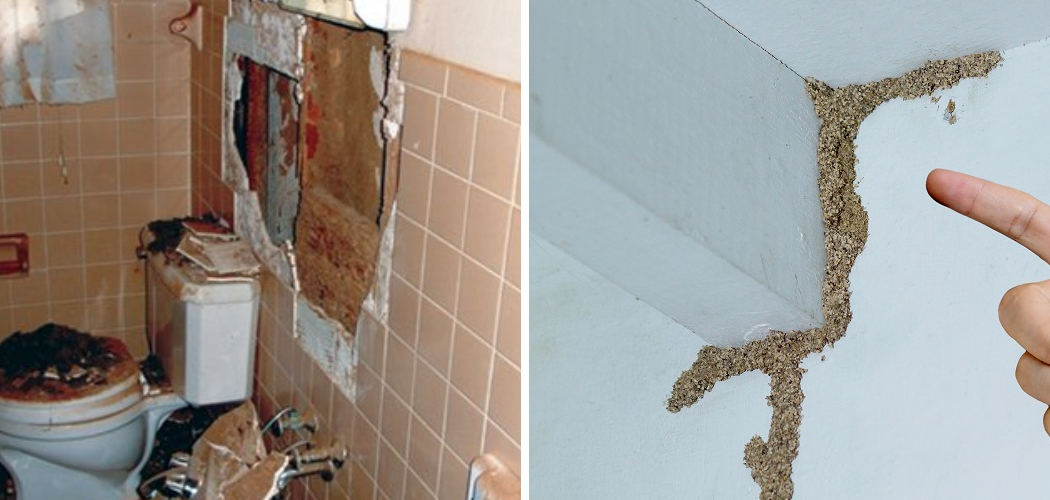Have you been noticing tiny holes in your bathroom walls? Are there signs of tunneling and mud tubes near your plumbing fixtures? If so, you may be dealing with a termite infestation – one of the most destructive pests homeowners can encounter. These relentless insects can turn even the heartiest structure into nothing more than a pile of dust.
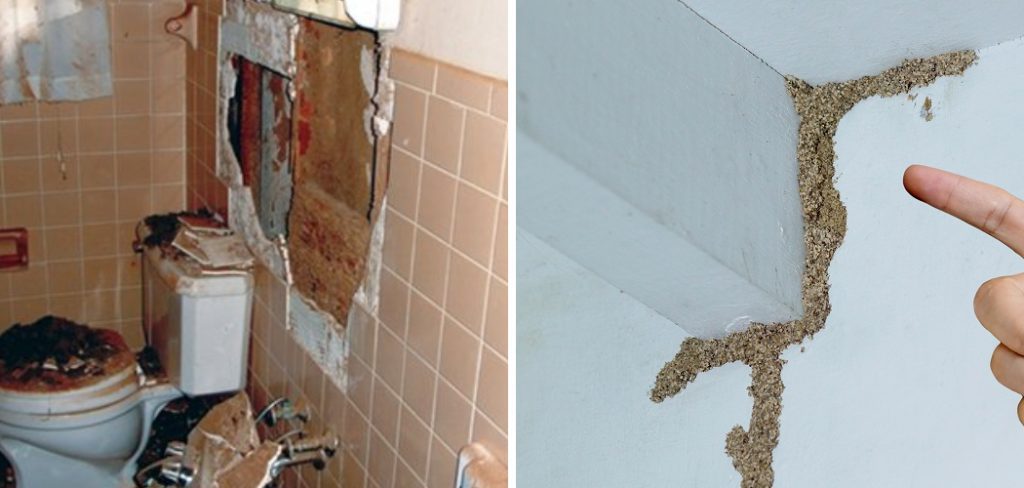
But don’t let that scare you! This blog post on how to treat termites in bathroom will provide step-by-step instructions on how to effectively treat termites in your bathroom before they cause serious damage. Keep reading to find out why treatment is necessary, what signs may indicate an infestation and the best methods for getting rid of these unwanted tenants.
What Are Termites?
Termites are tiny insects that feed on cellulose-based materials, such as wood, paper and plants. They play an important role in nature by breaking down dead trees and returning nutrients to the soil. However, when they invade human habitats, termites become a serious threat – causing billions of dollars in property damage every year.
Signs of Termites in Your Bathroom
Termites are often referred to as “silent destroyers” because they can go undetected for long periods of time. They typically enter a home through cracks in the foundation, gaps around plumbing and electrical lines or by building mud tubes from the ground to the structure’s wooden elements. In the bathroom, termites are often found in areas with high moisture levels – such as near leaky pipes, roofs or windowsills.
Some common signs of termite activity in your bathroom include:
- Mud Tubes on Walls, Floors or Ceiling
- Small Holes in Drywall or Wallpaper
- Piles of Tiny Wings Near Windowsills or Light Fixtures
- Buckling or Bubbling Paint
If you notice any of these signs, it’s important to take action immediately. Ignoring a termite problem will only lead to more damage and costly repairs down the line.
10 Simple Step-by-step Instructions on How to Treat Termites in Bathroom
Step 1: Identify the Type of Termite
There are three main types of termites – subterranean, dry wood and damp wood. Each type requires a different treatment method, so it’s important to properly identify which type you’re dealing with. You can consult a professional pest control company or purchase a termite identification kit. It’s also helpful to keep a sample of the insect for proper identification.
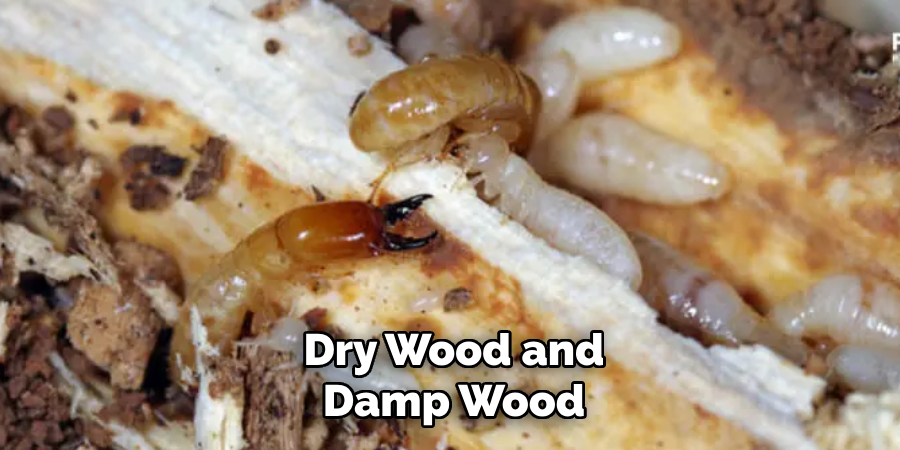
Step 2: Locate the Colony
Termites live in large colonies, so it’s important to locate and target the source of the infestation. Start by checking areas with high moisture levels, such as near pipes, sinks and bathtubs. It’s also important to inspect any wooden structures in or around the bathroom, including cabinets, baseboards and flooring.
Step 3: Eliminate Moisture Sources
Termites thrive in moist environments, so it’s crucial to eliminate any potential sources of moisture in your bathroom. Fix leaky pipes, seal any cracks or gaps where water may seep through and ensure proper ventilation to prevent excess humidity. You can also use a dehumidifier to reduce moisture levels in the air. It’s important to maintain a dry environment even after the termites have been treated.
Step 4: Remove Infested Wood
If you find any damaged or infested wood, remove and replace it immediately. This will not only prevent further termite activity but also help contain the infestation in one area. But be careful not to disturb any termites you may find – this will only cause them to move and spread to other areas of your home.
Step 5: Use Liquid Termite Treatment
Liquid termite treatments are an effective way to kill termites on the spot. These treatments can be applied directly to infested areas or used as a barrier around your bathroom’s foundation. Look for products containing active ingredients such as fipronil, imidacloprid or permethrin. It’s important to follow the instructions carefully and wear protective gear when using these products.
Step 6: Use Bait Stations
Bait stations are another effective method for treating termites. These contain slow-acting insecticides that can be placed in areas where termites are likely to feed. The worker termites will carry the bait back to the colony, effectively killing off the entire population. Bait stations should be monitored regularly and replaced as needed.
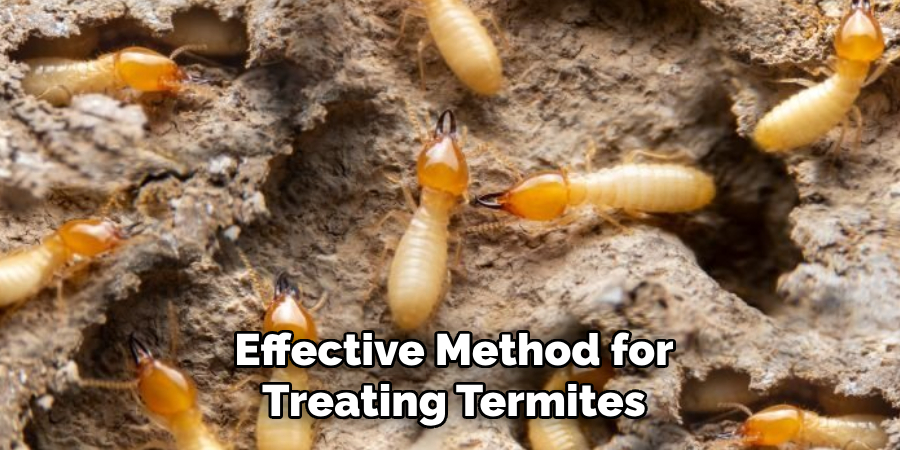
Step 7: Apply Borate Treatments
Borate treatments are a natural and non-toxic option for treating termites. These treatments can be applied directly to infested wood or used as a preventative measure in untreated areas. Borates work by altering the termite’s digestive system, causing them to slowly starve. However, this method may take longer to see results. You can purchase borate solutions at most home improvement stores.
Step 8: Use Nematodes
Nematodes are microscopic roundworms that feed on termites and other pests. These can be purchased as live organisms or in powder form, which is mixed with water and sprayed in infested areas. Nematodes are safe for humans and pets but should be applied when there is no direct sunlight. It’s also important to keep the treated area moist for a few days.
Step 9: Seek Professional Help
If the termite infestation is severe or if you’re unsure of how to properly treat it, it’s best to seek professional help. Pest control companies have access to stronger and more effective treatments that can eliminate termites in a timely manner. They can also provide recommendations on preventative measures to avoid future infestations.
Step 10: Regularly Inspect for Termites
Even after treating the termite problem in your bathroom, it’s important to regularly inspect for any signs of activity. Termites are persistent and can return if proper preventative measures are not taken. It’s recommended to have a professional pest inspection at least once a year to catch any potential problems early on.
Following these 10 simple steps on how to treat termites in bathroom can help you effectively treat termites in your bathroom and prevent them from causing further damage. Remember, early detection and prompt action are key to successfully dealing with a termite infestation. Stay vigilant and take necessary precautions to keep these destructive pests at bay.
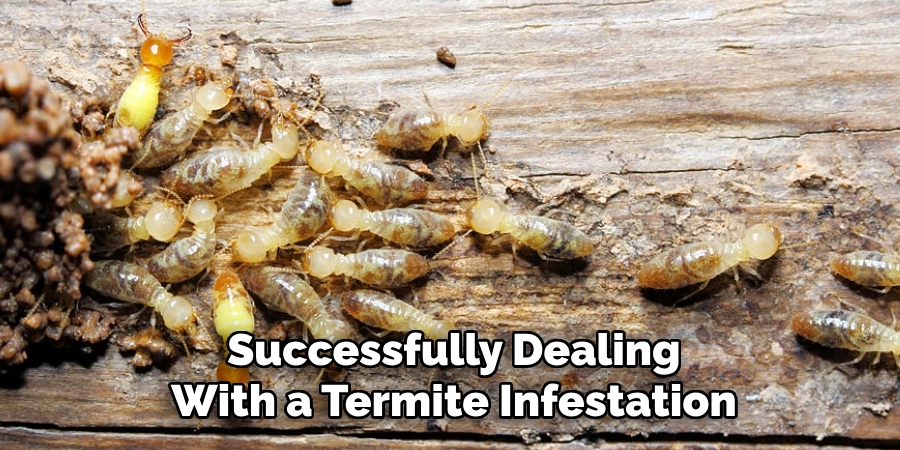
Do You Need to Get Support From Professionals?
Not all termite infestations can be treated using DIY methods. If you’re unsure or uncomfortable dealing with termites on your own, it’s always best to seek professional help. They have the knowledge, experience and proper equipment to effectively eliminate termites and prevent future infestations.
Plus, they can provide valuable tips on how to protect your home from termites. So don’t hesitate to reach out for support when dealing with termites in your bathroom. It’s better to be safe than sorry! Remember, early detection and prompt action are key to successfully dealing with a termite infestation. Stay vigilant and take necessary precautions to keep these destructive pests at bay.
Frequently Asked Questions
Q: Can I Treat Termites in My Bathroom Myself?
A: Yes, you can treat termites in your bathroom yourself with the proper tools and knowledge. However, severe infestations may require professional help. It’s important to properly identify the type of termite and choose the appropriate treatment method. Safety precautions should also be taken when using insecticides.
Q: How Long Does it Take to Get Rid of Termites?
A: The time it takes to get rid of termites depends on the severity of the infestation and the treatment method being used. Liquid treatments can work within a few days, while bait stations and borate treatments may take a few weeks to see results. It’s important to continue monitoring and treating until all signs of termites are gone.
Q: How Can I Prevent Termites in My Bathroom?
A: To prevent termites in your bathroom, it’s crucial to maintain a dry environment and eliminate any potential sources of moisture. Regularly inspect for leaks or cracks and fix them promptly. Additionally, using treated wood and applying preventative treatments such as borates can help deter termites from infesting your bathroom. Remember to regularly inspect for any signs of termite activity to catch potential problems early on.
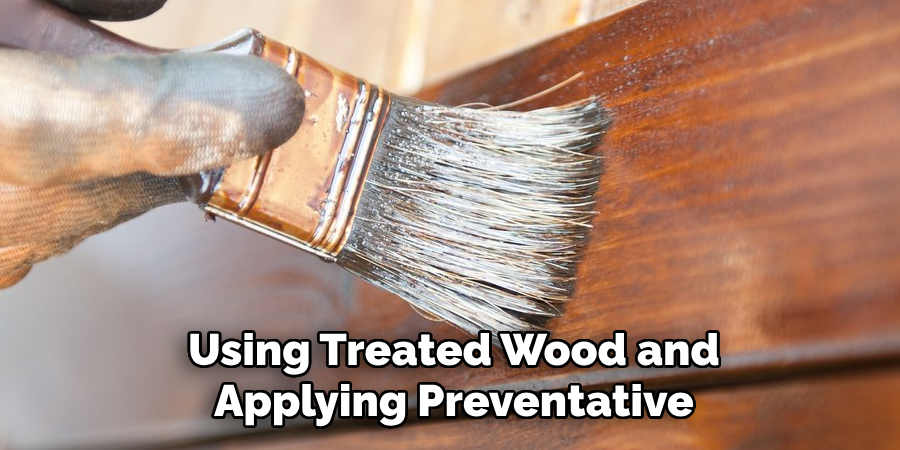
Q: Are Termites Harmful to Humans?
A: While termites do not pose a direct threat to humans, they can cause significant damage to buildings and wooden structures. Termites do not bite or spread diseases, but their presence can compromise the structural integrity of a home. It’s important to address and eliminate termite infestations in a timely manner to avoid costly repairs. Overall, it is best to treat termites as soon as they are discovered rather than risk potential harm to your home and property.
Conclusion
With these steps on how to treat termites in bathroom, you can successfully treat and prevent the termite problem in your bathroom for good. To make certain that the problem is completely taken care of, hire a professional exterminator to examine and inspect your property and help you tackle any lurking pests. Don’t forget to check for other warning signs such as mud tubes or swarms to monitor the long-term results of your plan.
Though it may feel overwhelming, through regular checkups, proactive prevention, and careful strategies, you’ll be able to keep those bothersome pests away from your bathroom. Go forth confidently knowing there are solutions out there – now it’s time to get rid of those pesky critters once and for all!

